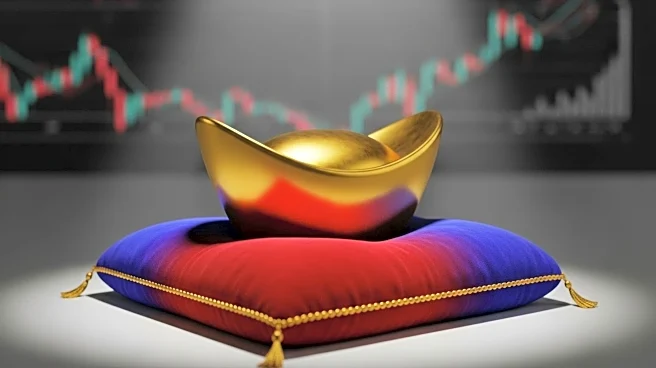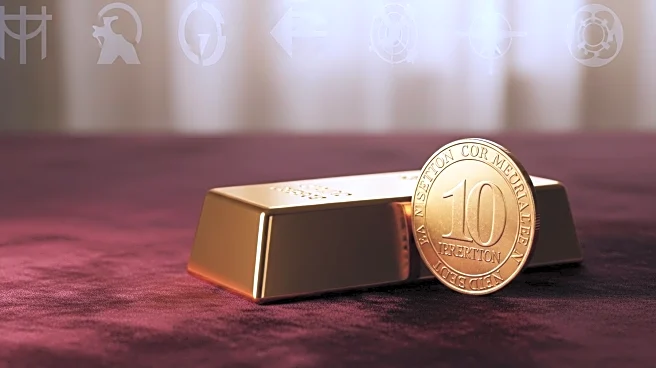What's Happening?
Gold prices have reached a record high of $4,059.05 per ounce, driven by investors seeking safe-haven assets amidst growing economic and geopolitical uncertainty. This surge marks an eighth consecutive weekly gain for gold, as investors anticipate further interest rate cuts by the U.S. Federal Reserve. Spot gold was up 0.5% to $3,992.97 per ounce, while U.S. gold futures for December delivery rose 0.8% to $4,005.30. The rally is supported by multiple factors, including geopolitical risks, robust central bank buying, exchange-traded fund inflows, and trade-related uncertainties. Silver also saw significant gains, rising 3.7% to $50.95 per ounce, following a record high of $51.22.
Why It's Important?
The record high in gold prices reflects broader economic and geopolitical uncertainties, highlighting gold's role as a hedge against instability. The anticipation of U.S. Federal Reserve rate cuts suggests potential shifts in monetary policy aimed at addressing labor market risks, despite ongoing inflation concerns. This environment positions gold as a strong alternative to the dollar, indicating a lack of trust in the global financial system. The surge in silver prices further underscores the volatility in precious metals markets, driven by factors such as increased lease rates and liquidity issues. These developments have significant implications for investors and financial markets, as they navigate the complexities of global economic conditions.
What's Next?
Investors are closely monitoring the U.S. Federal Reserve's actions, with expectations of two rate cuts of 25 basis points each in October and December. The potential for increased volatility in silver markets, due to backwardation and liquidity challenges, suggests opportunities for strategic investments. As geopolitical tensions and economic uncertainties persist, the demand for safe-haven assets like gold and silver is likely to continue. Market participants will need to assess the impact of these developments on their investment strategies, considering the broader implications for global financial stability.
Beyond the Headlines
The rise in gold prices may signal a long-term shift in investor sentiment, as gold transitions from a defensive asset to an offensive one. This change reflects deeper concerns about the reliability of traditional financial systems and currencies. The ongoing geopolitical tensions, particularly in regions like the Middle East, could further influence commodity markets and investor behavior. Additionally, the dynamics of backwardation and contango in silver markets highlight the complexities of commodity trading, offering insights into potential future trends and investment opportunities.










